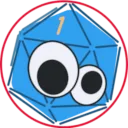I know this next installment was delayed. I have a good explanation, though. It's not just my initial attempt to use the WorldMapPin Community!
First, the friend-shaped car broke down. Fortunately, she waited until after I got back to my home turf instead of dying hundreds of miles from home. It looks like the main problem is a misfire due to weak spark, so it needs a new coil pack, and is due for new plugs and wires anyway.
Second, getting back into the swing of my weekly routine sapped a lot of my energy for writing. This post in particular was a lot of work as I went through my snapshots to see what was even marginally presentable, decided how to actually present everything, and then cropped/edited as necessary.

In my last post, I had finished with spending the night at Biggs Junction in Oregon at the south end of the Sam Hill Memorial Bridge. On the Washington side of the river to the north is Maryhill, an unincorporated community centered around the estate of railroad baron Samuel Hill and named after his wife Mary. The building is designed around the automobile, and incorporates two massive garages plus a ramp so cars could drive up to (or even through) the entrance.
Apparently Sam Hill wanted to build roads and establish an agricultural community in the region, so he bought land and began building his concrete mansion. He had connections to European aristocrats through his business dealings and travel, including Queen Marie of Romania, and entertained them at his home. However, during World War I, Hill pivoted to creating a museum here instead, and began with his own collection of art, native baskets, and other items of interest.
The Maryhill Museum of Art Today
From the parking lot, you approach the entrance by way of a long ramp up and over a somewhat round structure where it wraps around the roof of large rooms below. Wide doors open into the buseum where you pay your admission fee at the desk. There is also a small gift shop here.
The entry level includes a lot of ornate items, some still bearing handwritten tags from Marie herself. There were furnishings, a massive glass case displaying an embroidered ballgown, jewelry, and this portrait of Queen Marie's daughter.
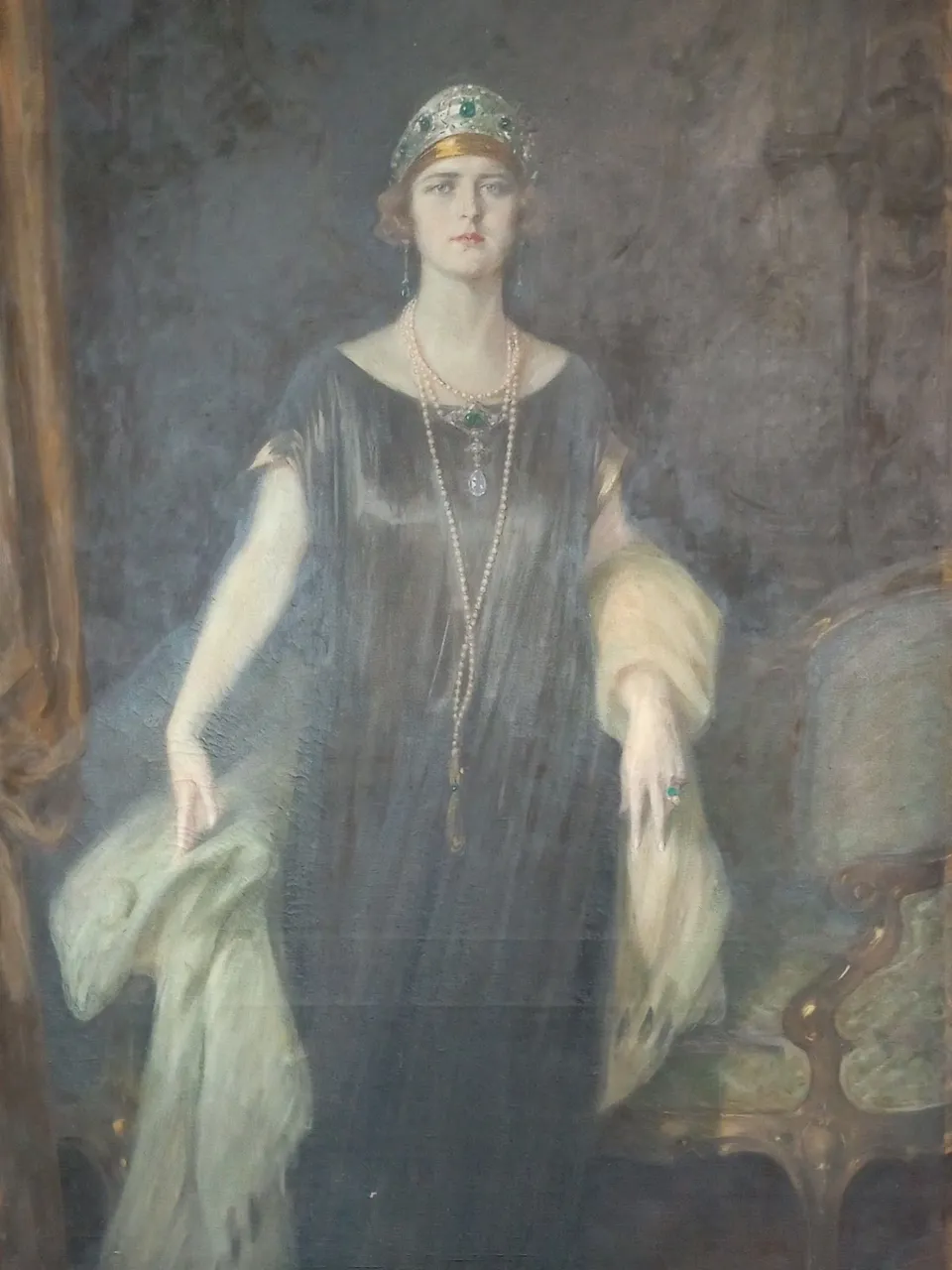
Mignon, Queen of the Kingdom of Serbs, Croats, and Slovenes
Paul Joanovitch, oil on canvas, ca. 1925
There was also a library-like room with a video on loop about the nearby Maryhill Stonehenge (more on that in a future post) and a small adjoining room with an assortment of Orthodox icons. These were contributed by the aforementioned Queen Marie, and while they have a medieval eastern aesthetic, some are quite recent. There is a proper way to produce icons, you see. One does not mess with tradition.
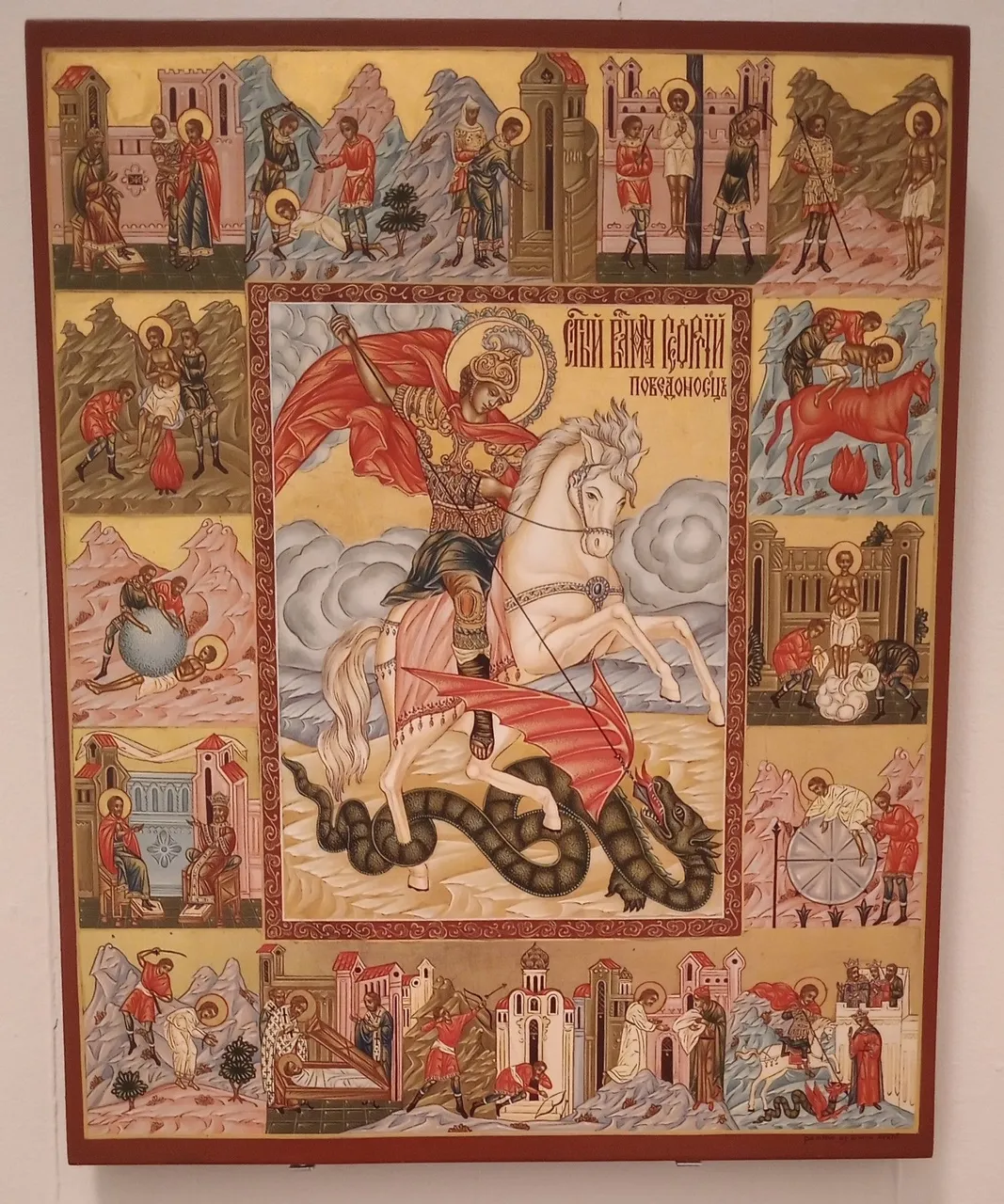
St. George the Great Martyr
Diana Arkhi, egg tempera and gold leaf on wood panel, 2011
Rounding out this floor was a small art room with coloring pages for kids. The theme was salmon, as befits a site overlooking the Columbia River.
The entrance is actually on the third of four floors. I took the spiral stairs up to see the galleries at the top level before descending to see what was below. Part-way up, a small room showed an example of how their massive archive of stored art and artifacts looks when not on display with context.
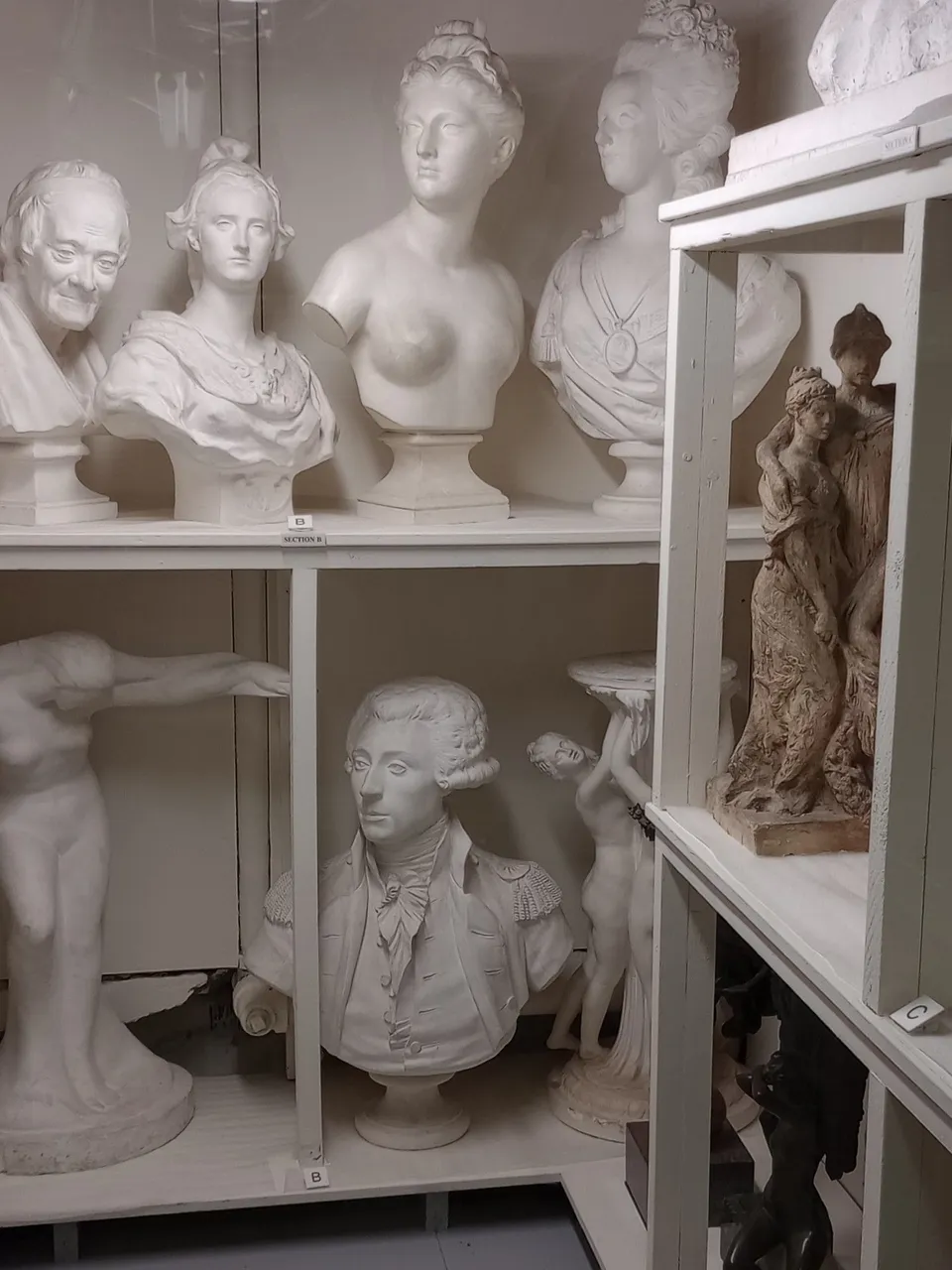

At the top of the stairs, I turned left into the painting gallery. The current exhibitions are King Salmon: Contemporary Relief Prints and The Columbia River: Wallula to the Sea featuring works by Thomas Jefferson Kitts and Erik Sandgren. I honestly didn't get anything from the former, but your mileage may vary. I much preferred the latter.
Landscapes range from impressionistic to realistic. I'll share a few snapshots and let them speak for themselves. Like the portrait of Mignon above, I may crop out the frame and focus on part of some paintings. If you have any interest in art, these are worth seeing in person. Several other artists from the past and present were also presented in the collection along with other exhibits related to the river and native culture.
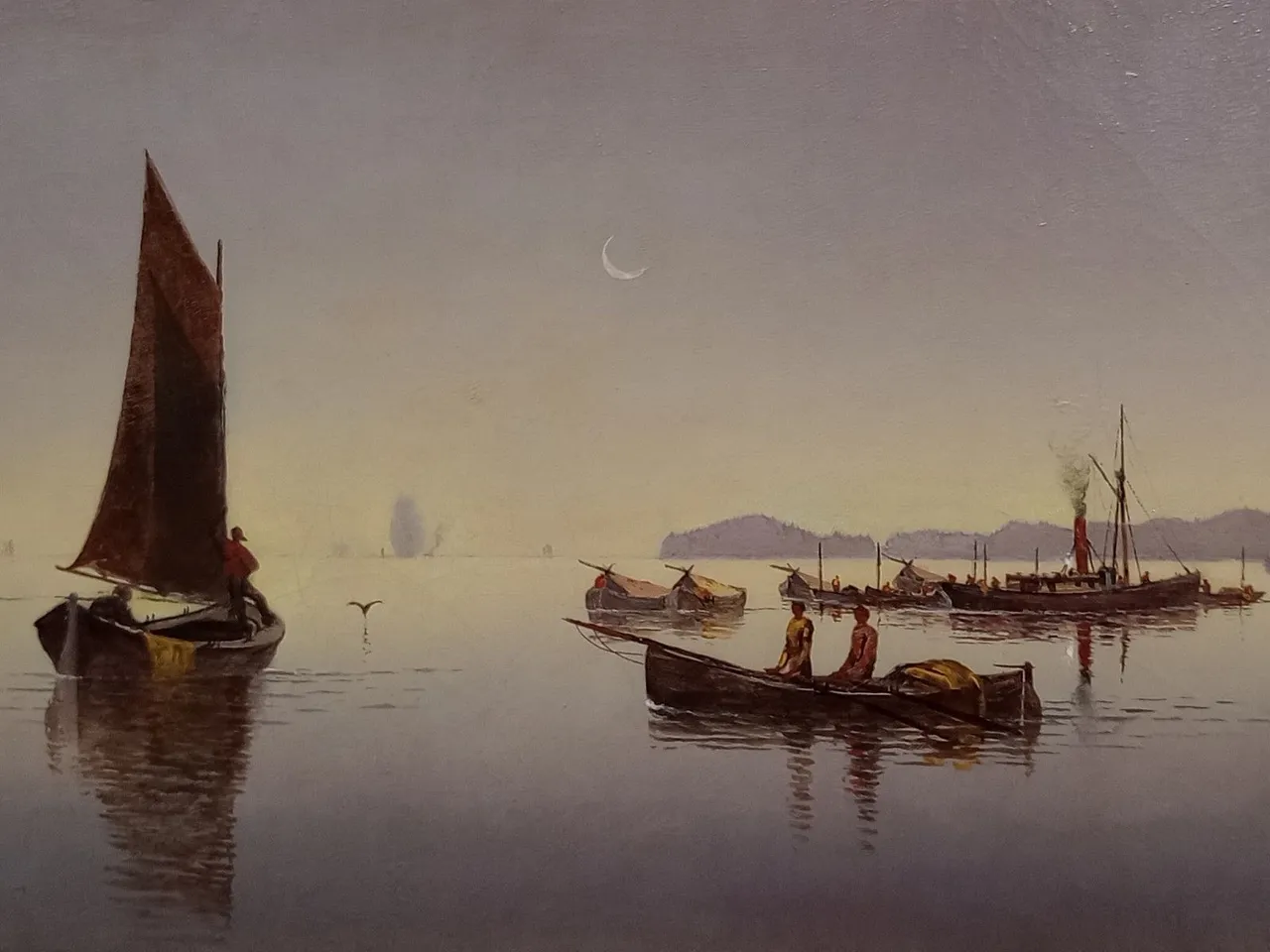
Salmon Fishing Grounds—Mouth of the Columbia
Cleveland Salter Rockwell, oil on canvas, 1883
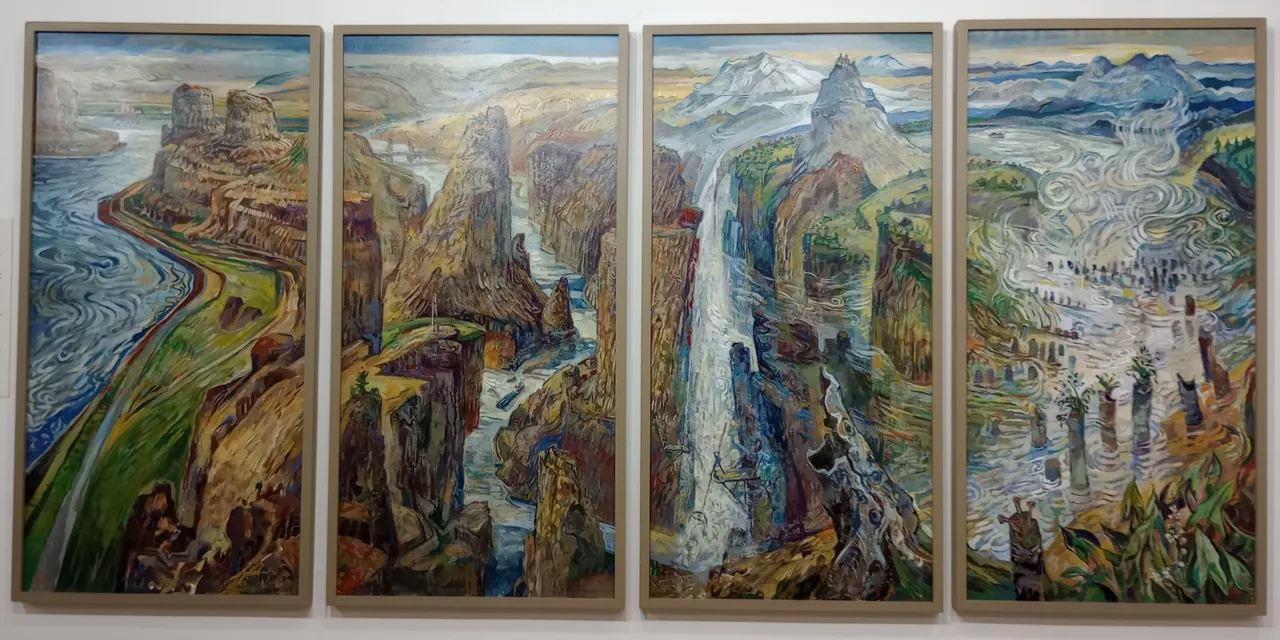
Wallula to the Sea
Erik Sandgren, acrylic on panel (polyptych), 2023
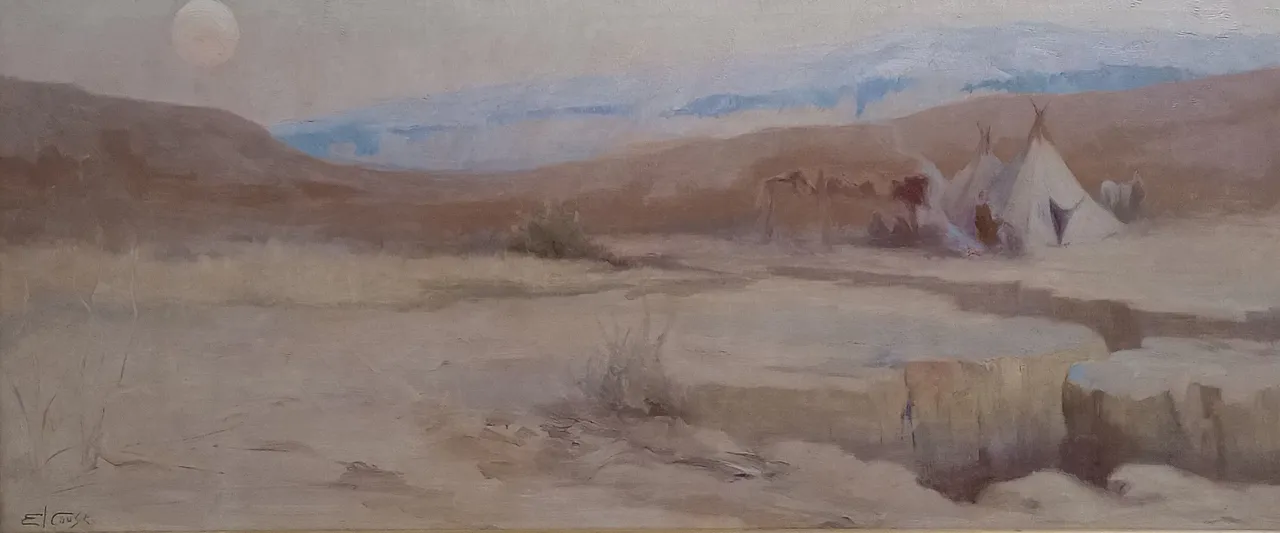
Columbia River near Arlington
Eanger Irving Couse, oil on canvas, 1891
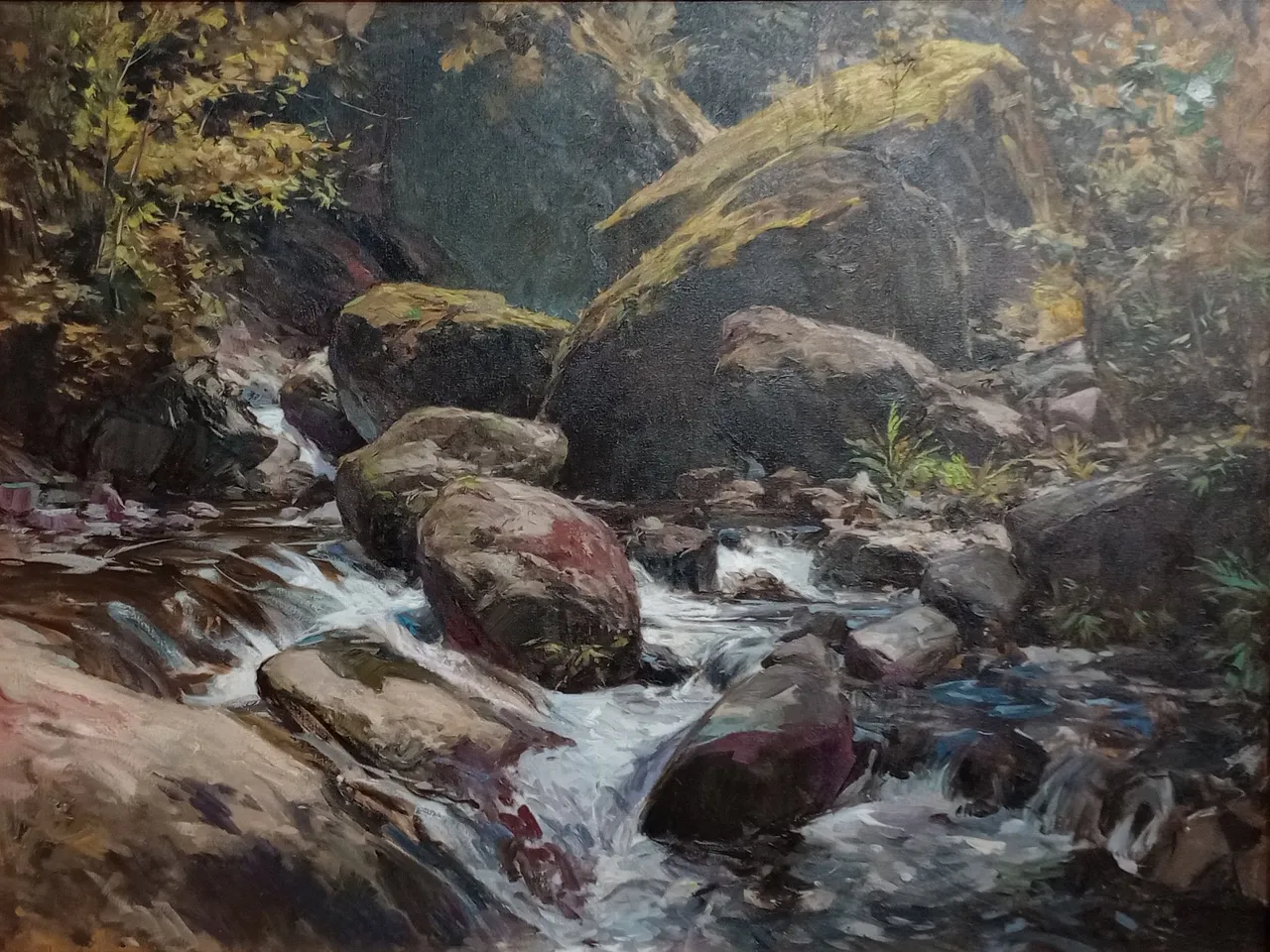
Water of Life, Upper Wahclellah Creek
Thomas Jefferson Kitts, oil on canvas, 2013


The other half of this top floor is a permanent display entitled Théâtre de la Mode. After World War II, shortages forced fashion designers to literally scale back their displays and present their designs on miniature mannequins.
Maryhill is home to nine re-built sets and restored mannequins dressed in period casual and formal wear. Each year, three of the nine sets are on display.
In 2024, all or part of three different Théâtre de la Mode sets will rotate onto view: Louis Touchagues’ “La Rue de la Paix en la Place Vendôme”; Georges Douking’s “L’Île de la Cité”; and a portion of Christian Bérard’s “Le Théâtre.”

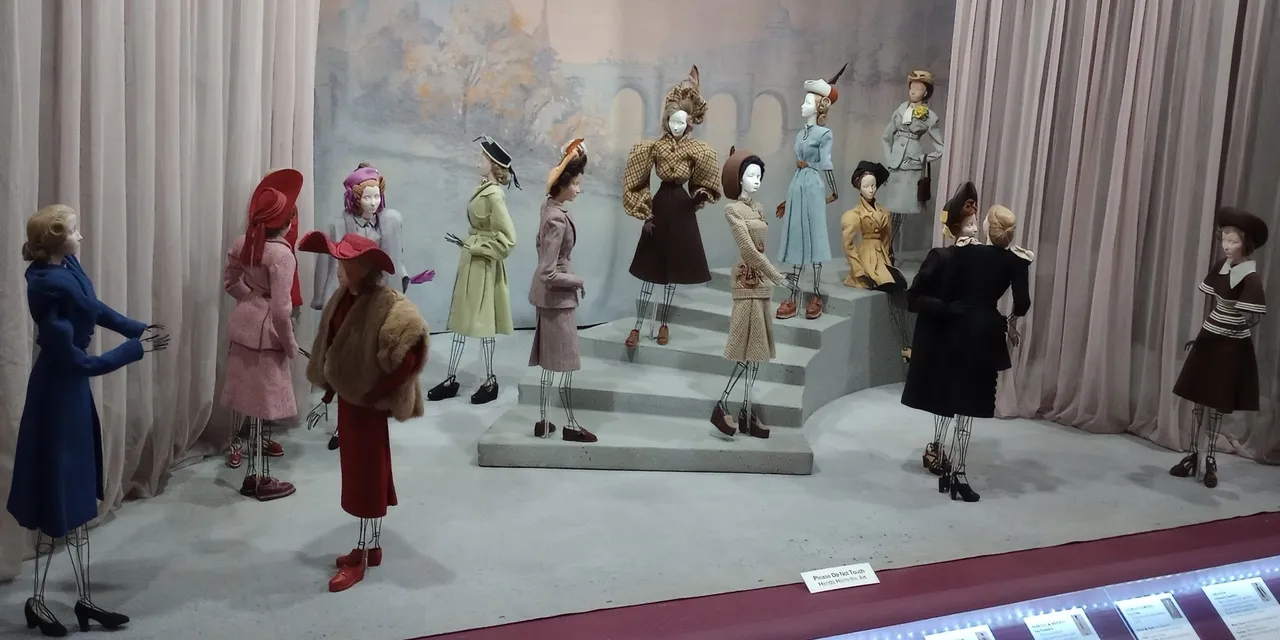
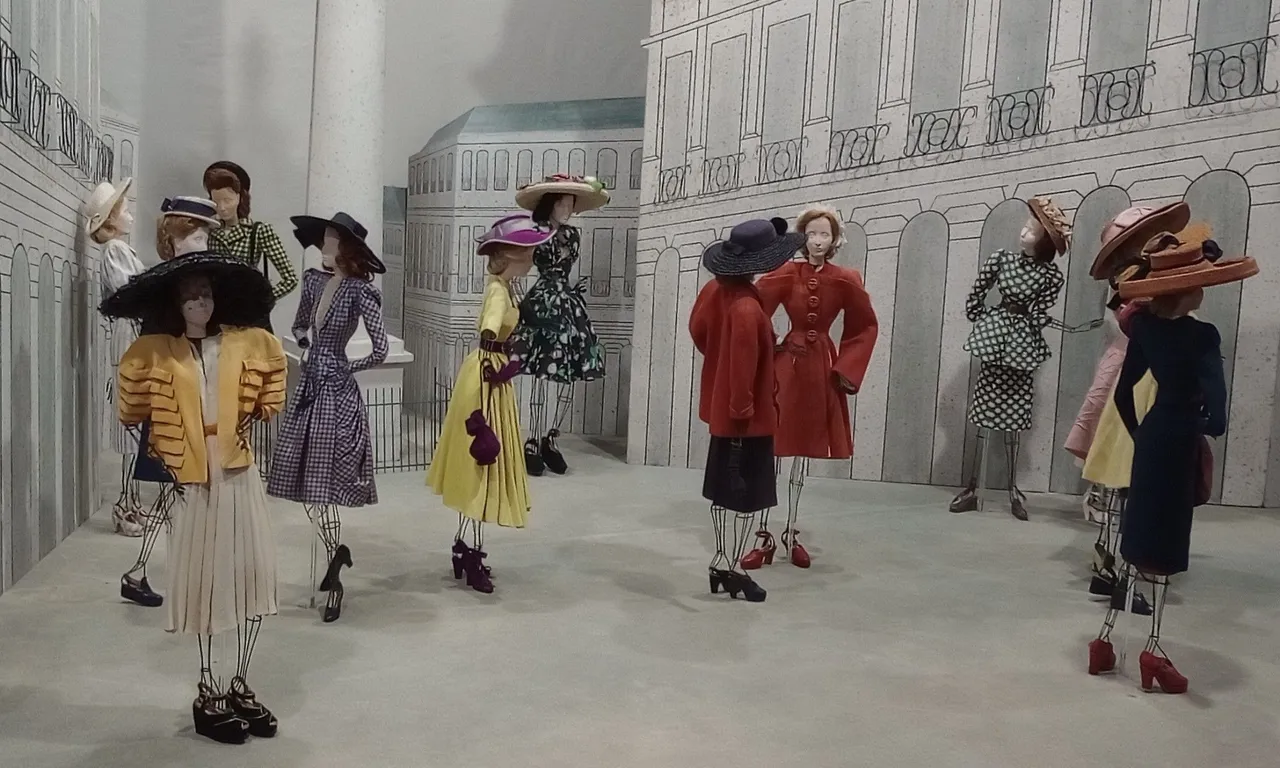
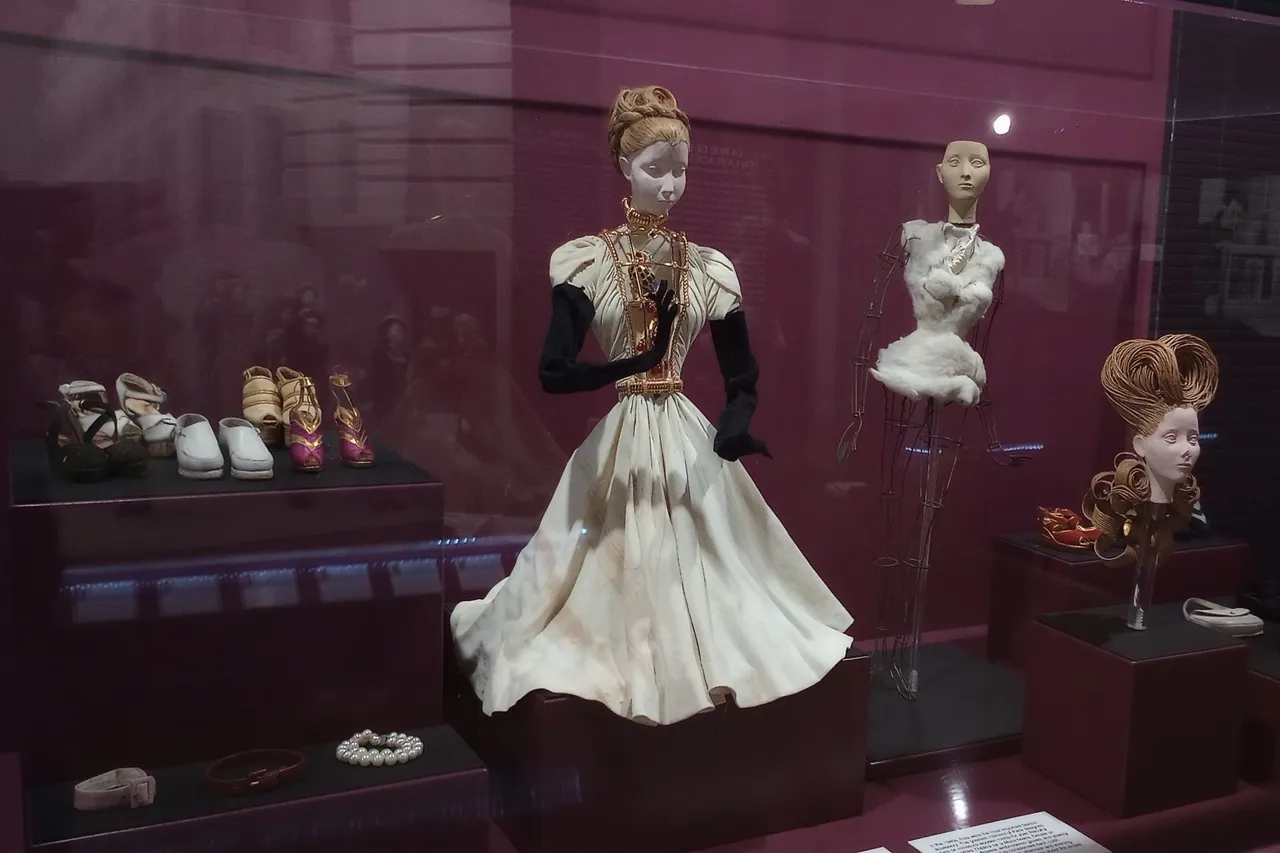

After walking the circuit through the art gallery and the mannequins, I returned to the spiral stair and descended past the entry level to the first of two lower floors. There are two large rooms on either end of this level connected by a long, wide hallway. These are beneath the ramps leading to the entrance on one side, and a similar ramp on the other.
Originally, these large round rooms were garages for Hill's automobile obsession. Now, one is dedicated to sculptor Auguste Rodin, and the other is filled with indigenous arts and crafts. The hall in between was dedicated to dancer Loïe Fuller.
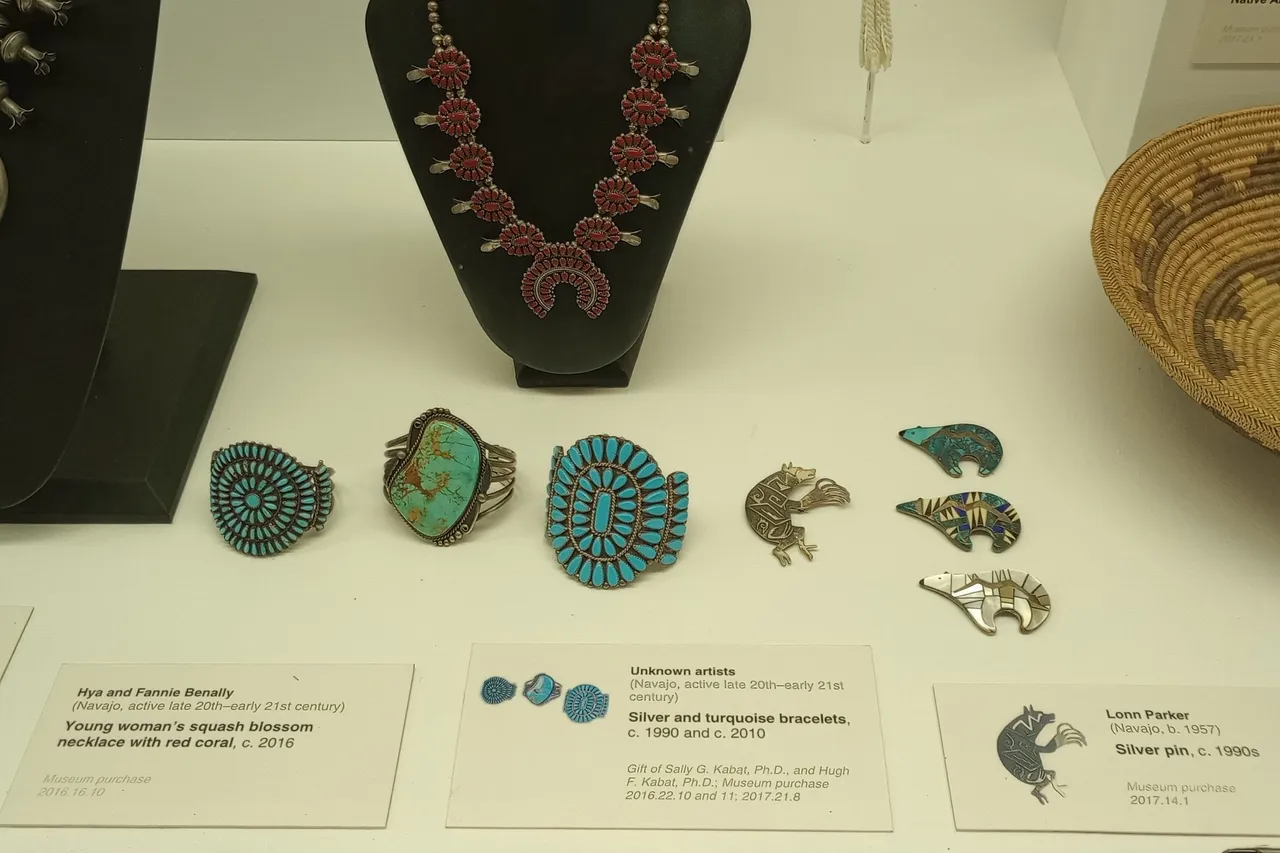
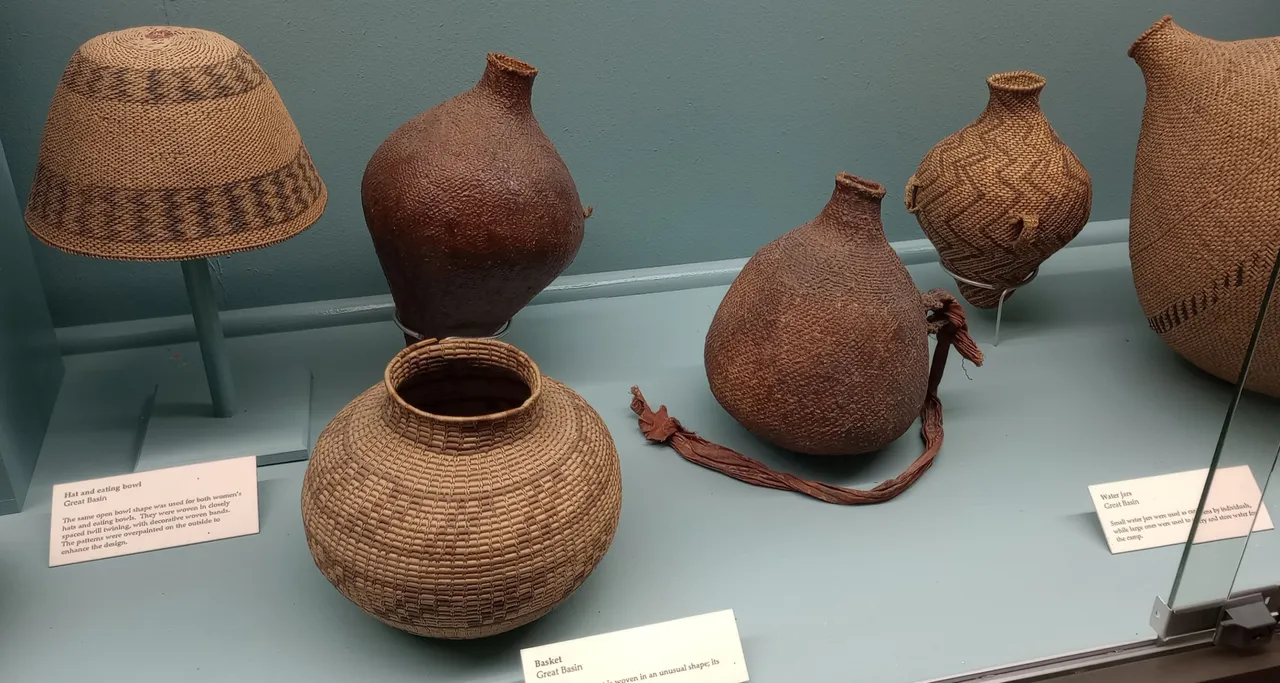
There were school tours, and I didn't want to be the weird stranger snapping photos of random kids. However, I did snap a few pictures of the indigenous artifacts above and I got a photo of these Greek Tanagra figurines, ceramic statues from central Greece dating back to the 5th century A.D. from the hall toward the final section of the museum.

This floor perhaps best displays Hill's own eclectic interests. The Rodan and Native American exhibits began as his personal collection, and he was a friend of Ms. Fuller. However, one more floor remained to be explored. This last section of the museum extends at a right angle from the hallway between the garages, and is clearly a more modern addition base don the materials and design. It incorporates art deco glass and other art, but the light was poor for photography here due to the glare and reflections. Instead, after taking a look, I descended another stairwell to the lowest level of the museum.

This floor includes large conference or activity rooms which were filled with even more kids doing hands-on art activities. There is also a cafe with indoor and outdoor seating. Most interesting to me was the a hall in between with shelves of chess sets on display. These range from traditional to abstract, precious metals to plain wood, and historical royalty to pop culture icons. Whether you play chess or not, this is worth the walk.
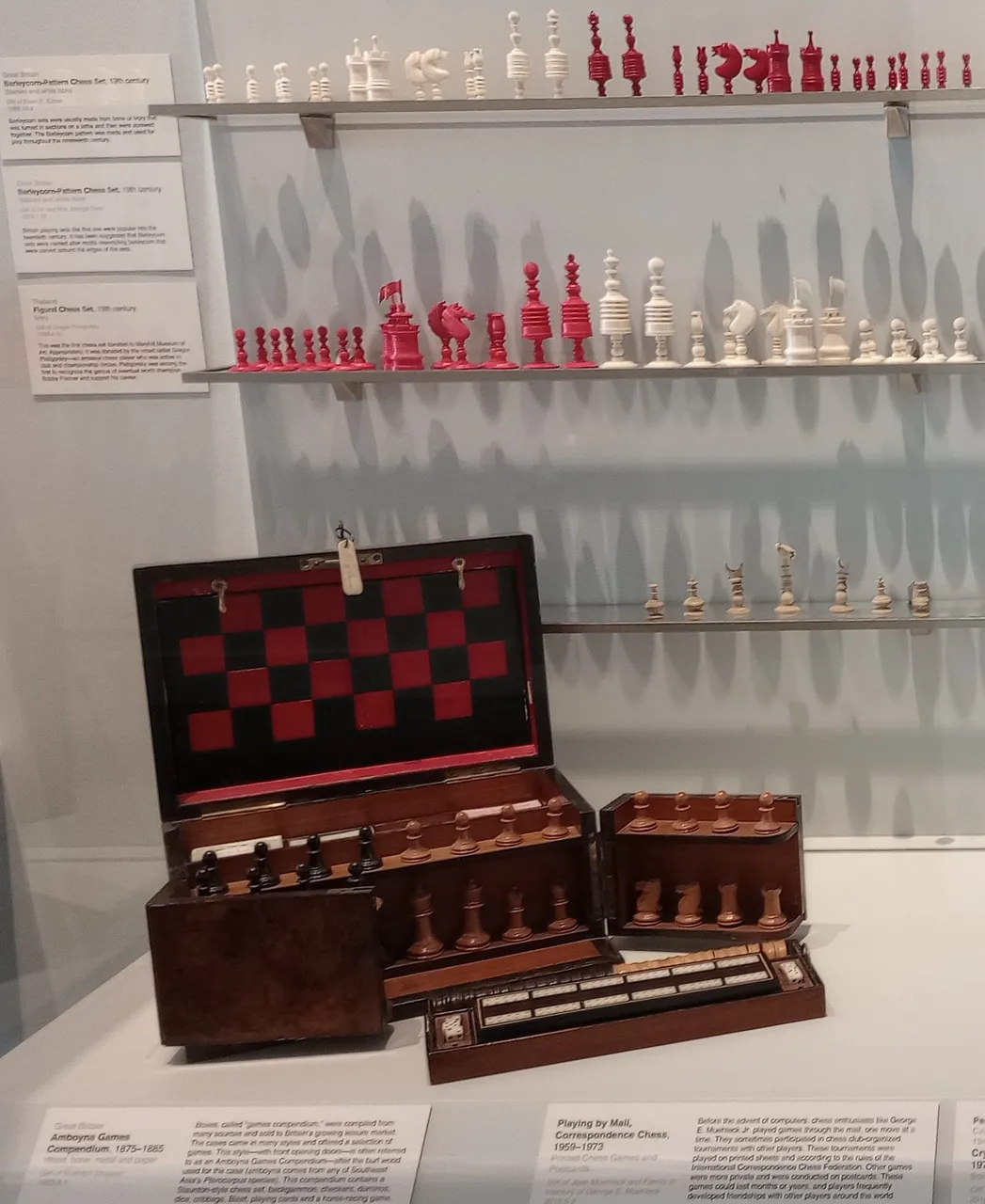



I should also note that there is a garden with sculptures for those willing to take the time for a walk around the grounds, so between the rotating exhibits and the areas I didn't thoroughly explore, this is easily worth a second visit at some point in the future, but I had places to be. I hit the road toward the Tri-Cities again, and I think I'll have one more post covering Stonehenge and the rest of the return trip to wrap up this series.
If this glimpse into the museum intrigues you, consider making it part of an excursion along the Yakama Scenic Byway to see the rest of the sights along the way! I've only been along there a twice now, and I plan to go back again to see more.
